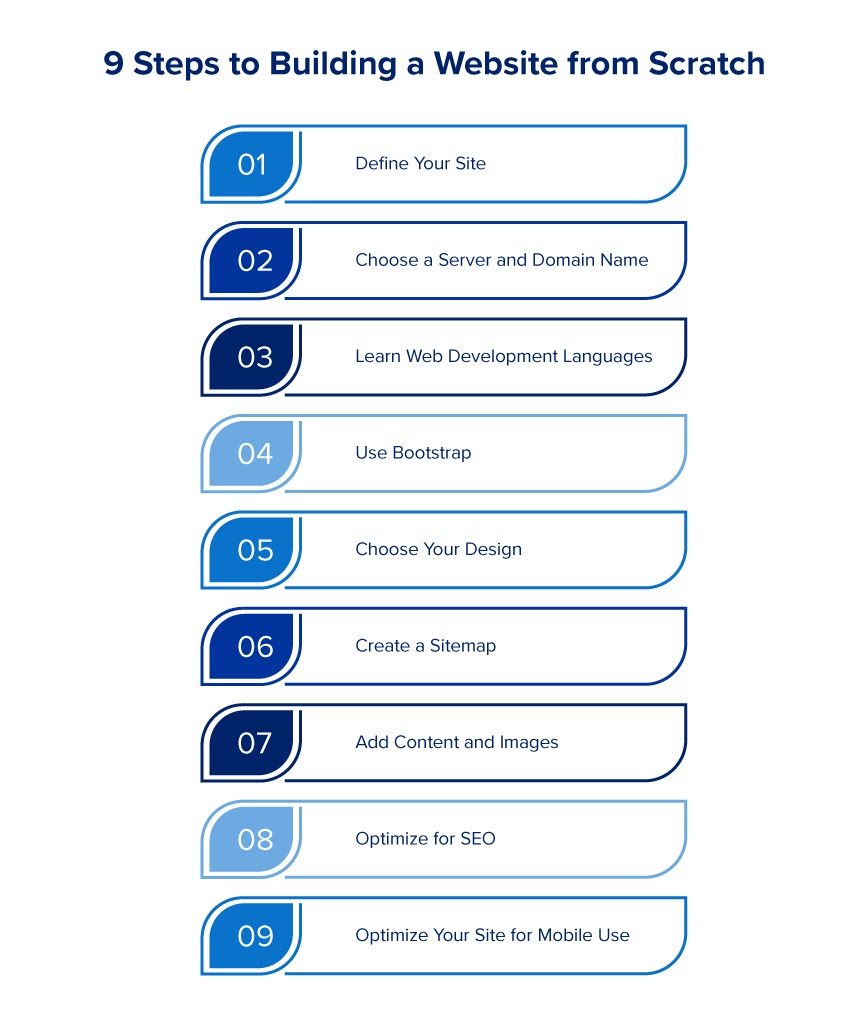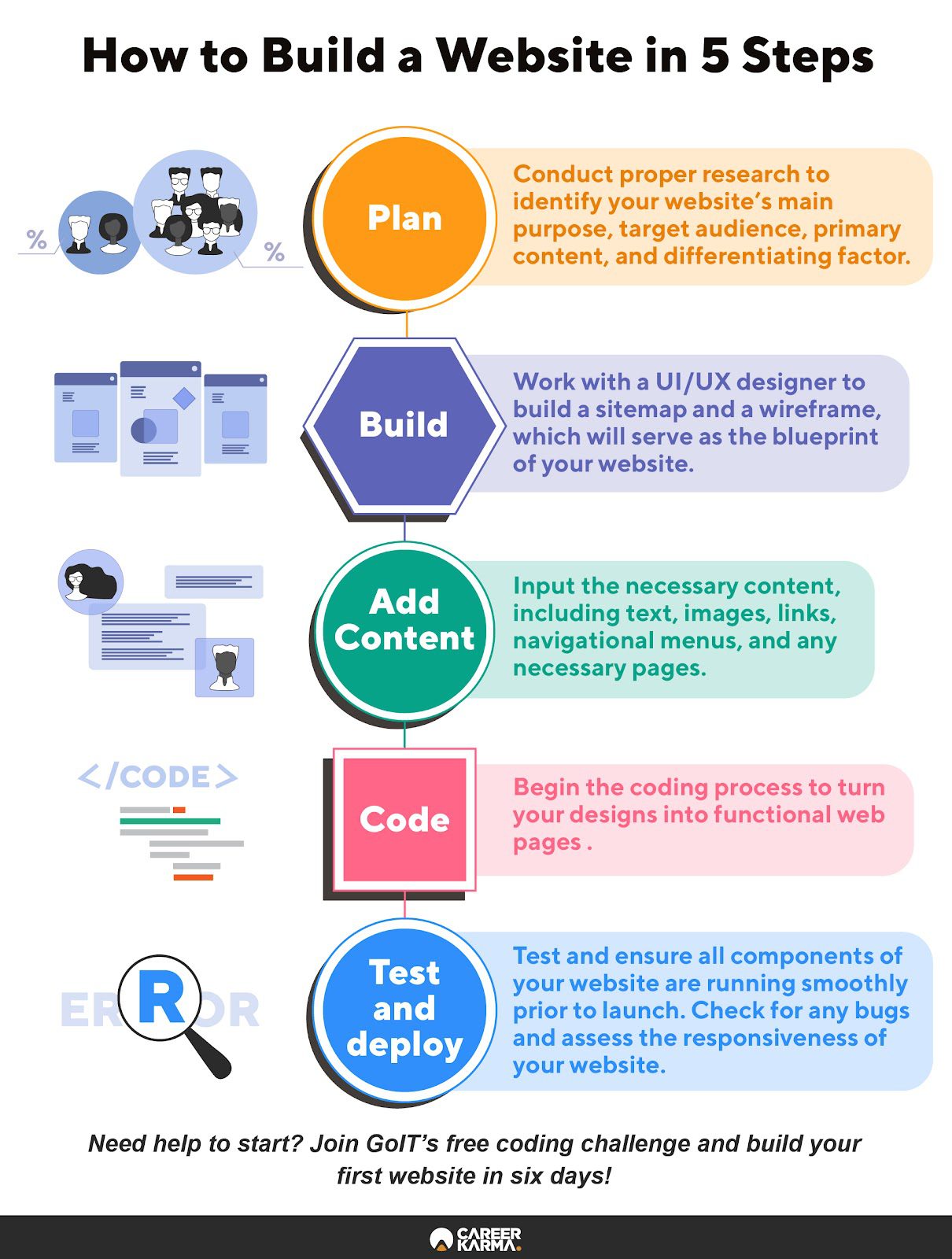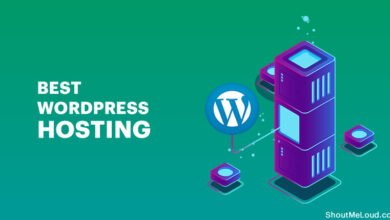Building a Website from Scratch: Expert Tips for Success
Building a website from scratch involves choosing a domain, hosting, and designing the layout. Starting a website requires selecting a domain name that reflects your brand and securing web hosting to store your site’s files.
Designing the layout involves creating visually appealing and user-friendly interfaces that cater to your target audience’s needs. Incorporating search engine optimization (SEO) strategies from the beginning can help boost your site’s visibility and attract more organic traffic. As you embark on this journey, remember that consistency in branding, content quality, and user experience are key elements in creating a successful website.
By following these steps and continuously refining your site, you can establish a strong online presence and reach your digital goals effectively.
Choosing The Right Platform
When building a website from scratch, one of the most critical decisions you’ll make is choosing the right platform. Your platform will determine the functionality, flexibility, and ease of use of your website, so it’s essential to carefully consider your options.
Considerations For Choosing A Platform
Before diving into the world of website building, there are several essential considerations to keep in mind when choosing a platform:
- Customization: Ensure the platform allows for the level of customization you require to bring your vision to life.
- Scalability: Consider the potential growth of your website and choose a platform that can accommodate future expansion.
- User-Friendliness: Opt for a platform that aligns with your technical expertise and offers an intuitive user interface.
- Cost: Evaluate the overall cost of the platform, including hosting, domain, and any additional features or plugins you may need.
Popular Platforms To Consider
When it comes to building a website, there are several popular platforms worth considering:
- WordPress: Known for its versatility and extensive plugin library, WordPress is an ideal choice for both beginners and experienced developers.
- Wix: With its user-friendly drag-and-drop interface, Wix is a popular choice for those seeking a straightforward website building experience.
- Squarespace: Renowned for its visually stunning templates and integrated e-commerce capabilities, Squarespace is an excellent option for creative professionals and businesses alike.

Credit: m.youtube.com
Understanding Your Audience
To build a website from scratch successfully, understanding your audience is crucial. Tailoring content and design to their preferences increases engagement and conversions. Conduct research, analyze demographics, and gather feedback to create a user-centric website that resonates with your target audience.
Understanding Your Audience In the process of building a website from scratch, understanding your audience is crucial for creating a user-centric and engaging platform. Defining Your Target Audience and Creating User Personas are key steps in understanding the needs and preferences of the people who will interact with your website.Defining Your Target Audience
Defining your target audience involves identifying the specific demographic, interests, and behaviors of the people you aim to reach with your website. This step helps in tailoring your content, design, and functionality to meet the needs of your audience effectively.Creating User Personas
Creating user personas involves developing fictional characters that represent different segments of your target audience. These personas are based on research and data, and they help in understanding the goals, motivations, and pain points of your users. By creating user personas, you can ensure that your website is designed to meet the specific needs of different user groups. Understanding your audience is fundamental to the success of your website. By defining your target audience and creating user personas, you can build a website that resonates with your users and provides them with a valuable and intuitive experience.Planning Your Website Structure
When it comes to building a website from scratch, planning your website structure is a critical first step. A well-thought-out structure ensures that your website is organized, user-friendly, and optimized for search engines. In this section, we’ll cover the essential aspects of planning your website’s structure, including creating a site map and organizing your content.
Creating A Site Map
A site map is a visual representation of your website’s structure, outlining the hierarchy of pages and how they interconnect. It provides a clear overview of the website’s architecture, making it easier for both users and search engines to navigate and index the content.
Organizing Your Content
Organizing your content involves categorizing and structuring the information on your website in a logical and intuitive manner. This helps users find what they’re looking for quickly and easily, enhancing their overall experience. Additionally, a well-organized content structure can positively impact your website’s SEO performance by making it easier for search engines to crawl and index your content.

Credit: bootcamp.cvn.columbia.edu
Designing Your Website
When it comes to building a website from scratch, one of the most crucial aspects is designing the website. The design of your website plays a pivotal role in attracting and engaging visitors. It reflects your brand’s identity and influences the user experience. Here, we will explore the essential elements of designing a website that not only looks visually appealing but also functions effectively.
Creating A Visual Style Guide
A visual style guide is a fundamental component in the process of designing a website. It serves as a reference point for maintaining consistency across all visual elements of the website. The style guide includes details such as color palette, typography, imagery guidelines, and overall design principles. By creating a comprehensive visual style guide, you can ensure that your website maintains a cohesive and professional appearance.
Tips For Effective Website Design
Effective website design encompasses a combination of aesthetic appeal and user-friendly functionality. Incorporating the following tips can help in creating a well-designed website:
- Utilize a responsive design to ensure compatibility across various devices and screen sizes.
- Optimize loading times by minimizing large images and unnecessary elements.
- Implement intuitive navigation to enhance user experience and ease of exploration.
- Strategically use white space to improve readability and visual clarity.
- Ensure accessibility by following web content accessibility guidelines (WCAG).
- Consistently test and refine the design to address any usability issues or inefficiencies.
Developing Your Website
Embark on the journey of creating a website from scratch to establish your online presence effectively. Crafting a website involves designing, developing, and optimizing for a seamless user experience. Start by outlining your goals and selecting the right platform for your unique vision.
Developing a website from scratch can seem like a daunting task, but with the right development tools and best practices, it can be a rewarding experience. When it comes to developing your website, it is crucial to choose the right development tools that will help you build a functional and efficient website. Additionally, following best practices for website development will ensure that your website is user-friendly, optimized for search engines, and meets accessibility standards.Choosing The Right Development Tools
Choosing the right development tools is crucial for website development. The following table highlights some popular development tools and their features:| Development Tool | Features |
|---|---|
| WordPress | Easy to use content management system, customizable themes and plugins, SEO friendly |
| Bootstrap | Responsive design, pre-built UI components, easy to customize |
| jQuery | Cross-browser JavaScript library, easy to use, large community support |
Best Practices For Website Development
Following best practices for website development will help you build a website that is user-friendly, optimized for search engines, and meets accessibility standards. The following are some best practices to consider:- Design a user-friendly interface that is easy to navigate
- Use responsive design to ensure your website is mobile-friendly
- Optimize your website’s speed and performance
- Ensure your website is accessible to users with disabilities
- Use proper HTML syntax and semantic markup
- Implement SEO best practices to improve your website’s visibility in search engines
Optimizing For Search Engines
When building a website from scratch, it’s crucial to optimize it for search engines to ensure it ranks well and attracts organic traffic. Search Engine Optimization (SEO) plays a vital role in making your website discoverable to potential visitors. Understanding SEO and implementing effective strategies is essential for the success of your website.
Understanding Seo
SEO involves various techniques and practices that help your website rank higher in search engine results. It includes optimizing your website’s content, structure, and performance to make it more appealing to search engines. Understanding the principles of SEO is fundamental in creating a website that is visible and accessible to your target audience.
Tips For Optimizing Your Website For Search Engines
- Keyword Research: Identify relevant keywords that your target audience is likely to search for. Integrate these keywords naturally into your website’s content.
- Meta Tags Optimization: Craft compelling meta titles and descriptions that accurately represent your page’s content and encourage users to click through.
- Quality Content: Create high-quality, engaging content that provides value to your audience and incorporates relevant keywords.
- Mobile-Friendly Design: Ensure your website is responsive and optimized for mobile devices, as mobile-friendliness is a crucial ranking factor.
- Page Speed Optimization: Improve your website’s loading speed by optimizing images, leveraging browser caching, and minimizing unnecessary code.
- Internal Linking: Create a logical internal linking structure to help search engines understand the hierarchy and relevance of your website’s content.
- Backlink Building: Acquire high-quality backlinks from reputable websites to enhance your website’s authority and credibility.
Creating Quality Content
Creating quality content for your website is crucial for engaging your audience and attracting new visitors. When it comes to building a website from scratch, quality content plays a significant role in establishing your online presence and driving traffic to your site.
The Importance Of Quality Content
Quality content is essential for SEO and user engagement. It helps your website rank higher in search engine results and keeps visitors interested in your content.
Tips For Creating Content That Engages Your Audience
- Know your target audience and tailor your content to their interests.
- Use relevant keywords to improve search engine visibility.
- Create engaging headlines to capture attention.
- Incorporate visual elements like images and videos for a more engaging experience.
- Write clear and concise content that is easy to read and understand.
By following these tips, you can create content that resonates with your audience and keeps them coming back for more.
Testing And Launching Your Website
When it comes to building a website from scratch, the crucial stages of testing and launching your website play a significant role in ensuring its success. Testing your website is essential to fix any issues before making it live, while launching it requires careful planning and execution.
Best Practices For Testing Your Website
1. Perform comprehensive testing across different browsers and devices to ensure compatibility.
2. Check load times to optimize performance and user experience.
3. Validate all links and forms to ensure they are functional.
Launching Your Website
1. Double-check all content to ensure accuracy and consistency.
2. Set up analytics to monitor website performance post-launch.
3. Create a marketing plan to promote your website and reach your target audience.

Credit: careerkarma.com
Frequently Asked Questions
Is It Cheaper To Build My Own Website?
Yes, building your own website is generally cheaper than hiring a professional. It allows for cost savings on design and development services.
How Do I Make My Own Website From Scratch?
To make your own website from scratch, choose a domain, select a web hosting provider, design your site, add content, and optimize for SEO.
How Much Does It Cost To Develop A Website From Scratch?
The cost to develop a website from scratch varies based on features and complexity. Basic sites can start at $1,000, while complex ones may cost $10,000 or more. It’s important to get a personalized quote from a web developer.
Can A Beginner Build A Website?
Yes, a beginner can build a website. With the availability of website builders and tutorials, anyone can create a website without coding knowledge. Many website builders offer easy-to-use drag-and-drop interfaces, templates, and plugins to help beginners build their websites. However, it may take time and effort to create a professional-looking website.
Conclusion
In sum, building a website from scratch requires planning, creativity, and dedication. It’s a rewarding process that allows you to showcase your brand or content to the world. Remember to focus on user experience and SEO best practices to drive traffic and engagement.
Happy website building!




